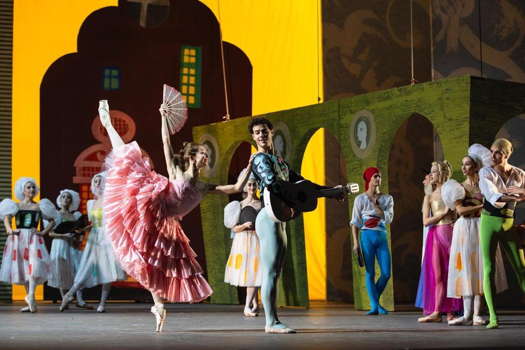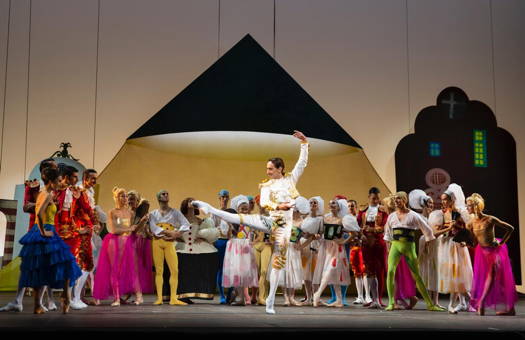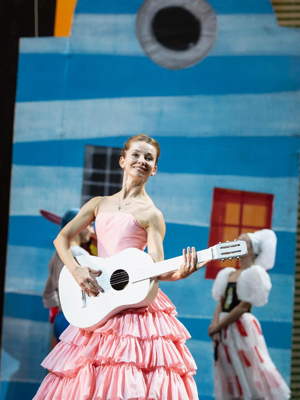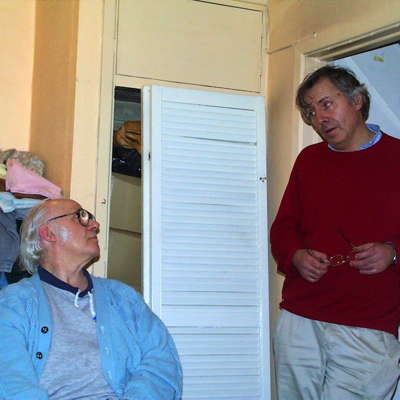- Mendelssohn Bartholdy
- Mel Bonis: Femmes de Légende
- Siegfried's Mechanical Music Museum
- Charles Harrison
- Nina Šenk
- Alys Mererid Roberts
- Alexandre Chance
- Domenico Scarlatti: Esercizio della stravaganza
'Don Quixote' Returns
GIUSEPPE PENNISI reports
from Rome's Opera House
on the Ludwig Minkus ballet
To conclude the 2018-2019 ballet season, the Rome Opera House has taken up a title that has often appeared in recent seasons: Don Quixote by Ludwig Minkus. It is the revival of a production which was reviewed in Music & Vision Magazine on 21 November 2017. At that time, its staging and choreography opened a new course of the Capital's ballet. The cast is obviously different.

A scene from Ludwig Minkus' Don Quixote in Rome. Photo © 2019 Yasuko Kageyama
Don Quixote has a special history. It belongs to the late Romantic period - the debut was in 1870, but the current version dates back to 1871. It was a project of Marius Petipa, who then did the good and bad weather in the area of ballet in the Imperial Theatres of Tsarist Russia. Petipa choreographed it with Alexander Gorgsky, a choreography that has been seen a dozen times since 1961 at the Rome Opera House. The music was commissioned from Minkus, who was born in what is now the Czech Republic but was then part of the Austro-Hungarian Empire. He arrived as a child in Vienna and became one of the court musicians in St Petersburg from 1869 until 1891, when he returned to Vienna, where he had little professional fortune and died in poverty because the Soviet revolutionary government took away his pension. His numerous ballets have always been in repertory in the USSR, but they did not arrive in the West until, in 1961, at the Parisian airport of Le Bouget, Rudolf Nureyev sought political asylum. In fact, the grand pas de deux of the third act of Don Quixote was known because George Balanchine, who was born in St Petersburg but escaped to the West when young, had included it in the repertoire of New York City Ballet.
Today Don Quixote is, with La Bayadère, one of the two most performed Minkus ballets. It is in the repertoire of the Royal Ballet and La Scala Theatre in the updated version by Nureyev, and in the American Ballet Theatre in that produced by Mikhail Barishnikov. Recently, Alexey Ratmansky, one of the most highly regarded choreographers of the younger generation, has prepared a very modern, and much-discussed, edition for Het National Ballet in Amsterdam. Even though Minkus remains an eclectic composer and is considered a journeyman, his ballet music is fine stuff.
The Don Quixote proposed by the Rome Opera House is very different from the productions based on Gorgsky's choreography. The choreography is by Laurent Hilaire, which in turn has its roots in that of Mikhail Baryshnikov for the American Ballet Theatre. It is much more dynamic and athletic than that by Gorgsky. The scenes and costumes by Vladimir Radunsky and A J Wiessbard are enchanting. They take us into the world of fairytales with bright colours and beautiful games of lights. Radunsky died in Rome about a year ago from leukaemia, and the revival is dedicated to his memory.

A scene from Ludwig Minkus' Don Quixote in Rome. Photo © 2019 Yasuko Kageyama
The ballet libretto has little to do with the narrative and spirit of Cervantes' novel. There is no shortage of 'tilting against windmills', but the interweaving - the contrasted love story of the young Kitri and Basil, intertwined with the roaring adventures of Don Quixote and his squire, Sancho Panza - is essentially a pretext to juxtapose Spanish music with neoclassical music and memories of Vienna. It is funny not melancholic, like other Cervantes-inspired works, especially Massenet's work. The score is more interesting than those of the late Romantic ballets of the time.

A scene from Ludwig Minkus' Don Quixote in Rome.
Photo © 2019 Yasuko Kageyama
David Garforth, the conductor, and the Opera House Orchestra showed this especially in the interlude between the second and third Acts of clear Austro-Hungarian imprint, while in the rest of the ballet on a middle-European carpet, references to Spanish music are inserted. Three casts alternate. On the evening of the premiere, on 15 October 2019, when I was in the audience, the two protagonists, Evgenian Obraztova as Kitri and Davide Dato - who remembers the young Baryshnikov - as Basilio were excellent. All the others were of the highest level, to a large extent thanks to Eleonora Abbagnato's renewal of the Teatro dell'Opera ballet.
Copyright © 28 October 2019
Giuseppe Pennisi,
Rome, Italy





